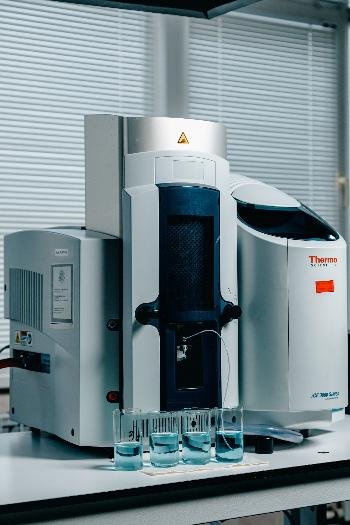Verkh-Nevinsky (Sverdlovsk region)
At the central laboratory of the branch "Production of non-ferrous metals" (PSTSM) of JSC "Uralelectromed" (an enterprise of the metallurgical complex of UMMC), the equipment for atomic absorption analysis was updated. Two new iCE 3300 spectrometers were installed in the room to work with a wide range of samples, laboratory furniture with modern acid-resistant tables and sinks, cupboards for storing solutions and drying racks.
According to Sergey Mazgalin, head of the central laboratory of Uralelectromed JSC , this area is an important part of the work of the central laboratory of the enterprise for the determination of the chemical composition in samples. The new atomic absorption spectrometer will be able to determine in samples such elements as copper, lead, iron, zinc, antimony, bismuth and others at a time. Moreover, in concentrations up to thousandths of a percent.
The equipment is equipped with modern software, with the help of which the laboratory assistant can control the operating parameters of the method and the results of the analysis of samples in the online mode.
The principle of the spectrometer is based on the measurement of the absorption of the radiation of the atoms of the determined elements formed when the solution being analyzed is sprayed in an acetylene-air flame The absorption value determines the concentration of elements in the solution. The sample enters the test in the form of a finely dispersed powder, which is transferred into a solution using acid decomposition. In a flame of acetylene-air with a temperature of 2200-2300 0 C, the analyzed solution turns into the so-called "atomic vapor", and the absorption spectrum can be used to judge the amount of the investigated element in the sample. To determine each element, its own coded lamp is used.
Analysis on the "atomic" takes less time than using classical chemical methods, such as titration. The work is accelerated due to the fact that one and the same solution can be used to determine several elements, sequentially changing the coded lamps on the spectrometer.
Today, laboratory assistants perform tests on samples of raw materials, semi-finished products and finished products: cakes and concentrates of lead, rough and commercial lead, middlings of slag and sludge, silvery foam, lead-zinc foam, technical zinc oxide, etc.





